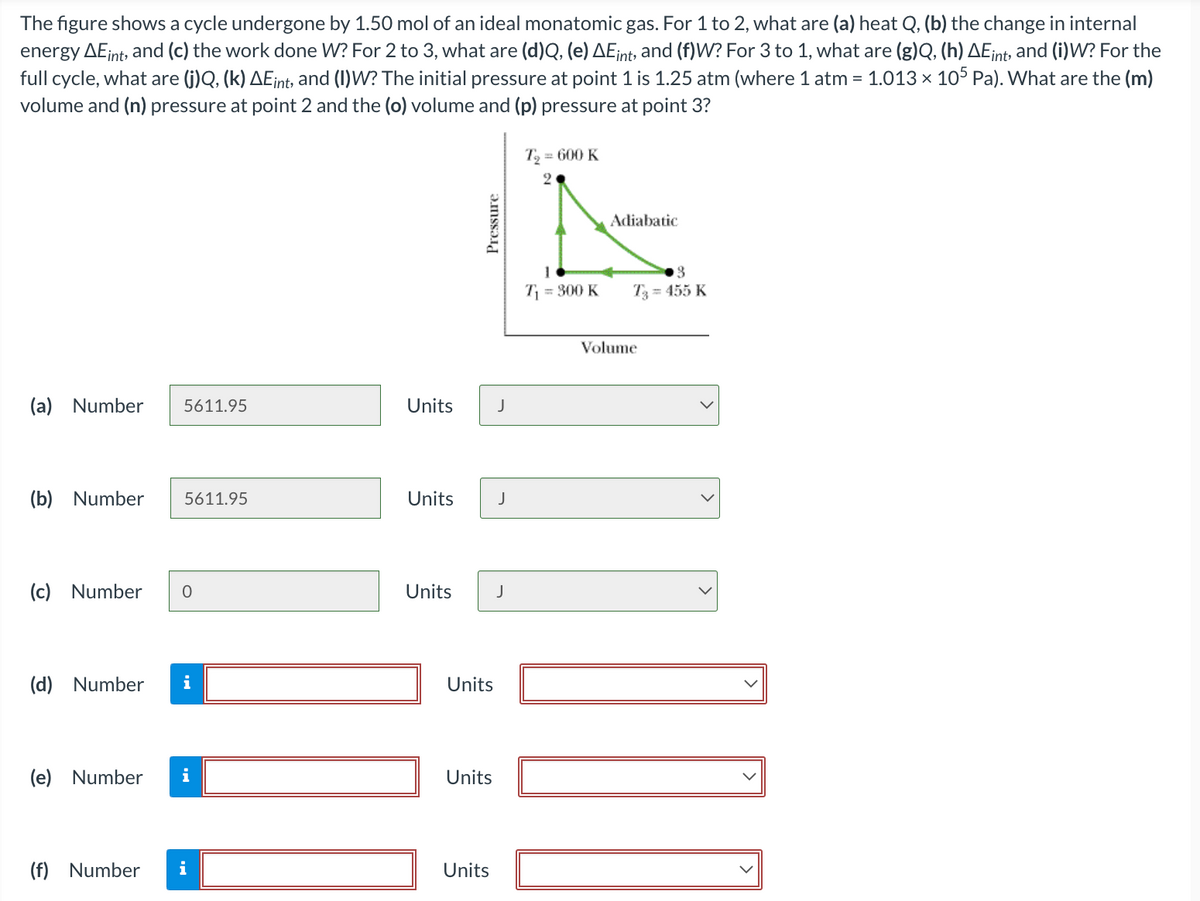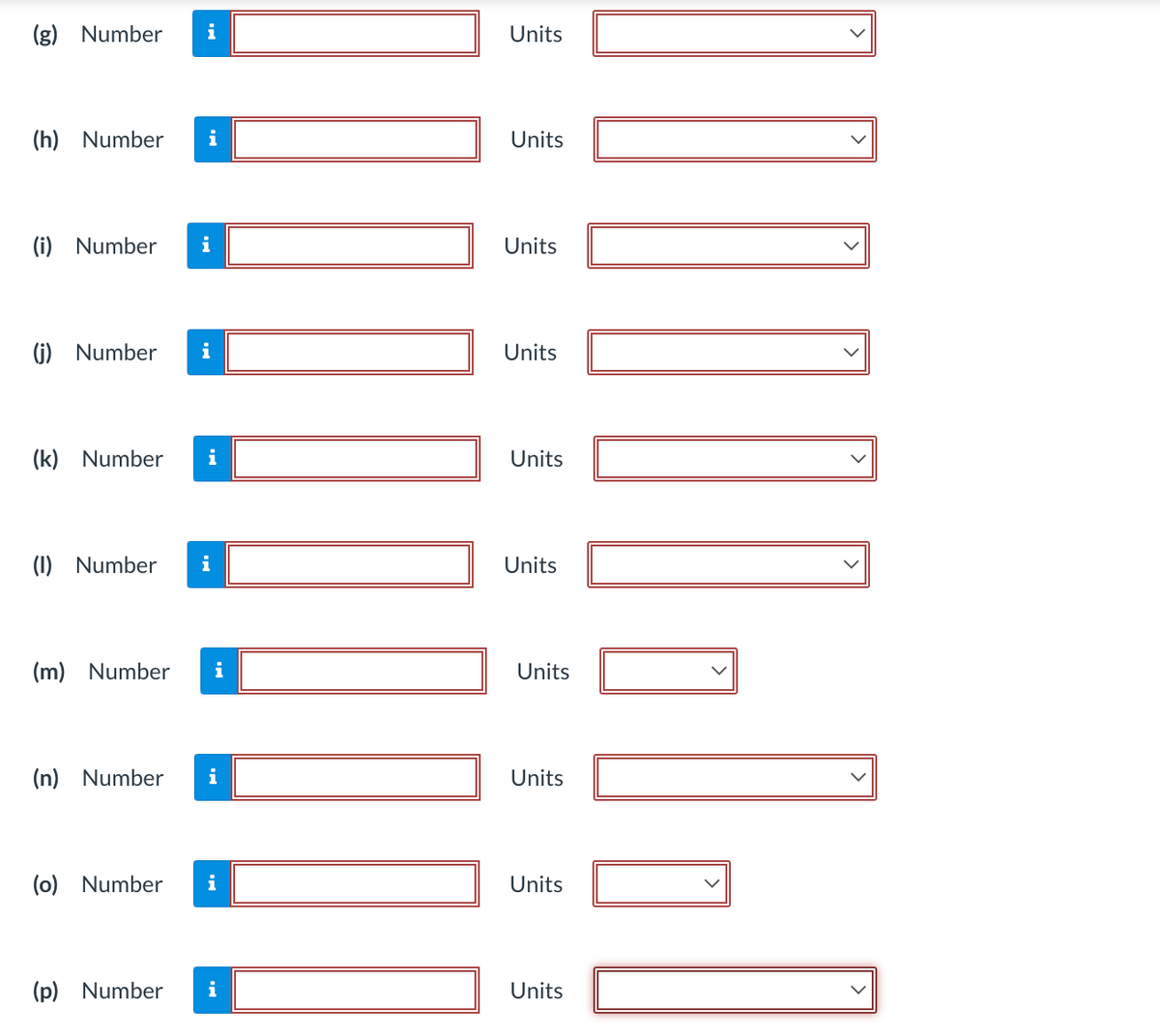The figure shows a cycle undergone by 1.50 mol of an ideal monatomic gas. For 1 to 2, what are (a) heat Q, (b) the change in internal energy AEjint, and (c) the work done W? For 2 to 3, what are (d)Q, (e) AE¡nt, and (f)W? For 3 to 1, what are (g)Q, (h) AEint, and (i)W? For the
The figure shows a cycle undergone by 1.50 mol of an ideal monatomic gas. For 1 to 2, what are (a) heat Q, (b) the change in internal energy AEjint, and (c) the work done W? For 2 to 3, what are (d)Q, (e) AE¡nt, and (f)W? For 3 to 1, what are (g)Q, (h) AEint, and (i)W? For the
Principles of Physics: A Calculus-Based Text
5th Edition
ISBN:9781133104261
Author:Raymond A. Serway, John W. Jewett
Publisher:Raymond A. Serway, John W. Jewett
Chapter18: Heat Engines, Entropy, And The Second Law Of Thermodynamics
Section: Chapter Questions
Problem 16P
Related questions
Question
100%
please help me

Transcribed Image Text:The figure shows a cycle undergone by 1.50 mol of an ideal monatomic gas. For 1 to 2, what are (a) heat Q, (b) the change in internal
energy AEint, and (c) the work done W? For 2 to 3, what are (d)Q, (e) AE¡nt, and (f)W? For 3 to 1, what are (g)Q, (h) AE¡nt, and (i)W? For the
full cycle, what are (j)Q, (k) AE¡nt, and (I)W? The initial pressure at point 1 is 1.25 atm (where 1 atm = 1.013 x 105 Pa). What are the (m)
volume and (n) pressure at point 2 and the (o) volume and (p) pressure at point 3?
T2 = 600 K
2
Adiabatic
T = 300 K
T = 455 K
Volume
(a) Number
5611.95
Units
(b) Number
5611.95
Units
J
(c) Number
Units
(d) Number
i
Units
(e) Number
Units
(f) Number
i
Units
Pressure

Transcribed Image Text:(g) Number
i
Units
(h) Number
i
Units
(i) Number
i
Units
(j) Number
Units
(k) Number
i
Units
(1) Number
Units
(m) Number
Units
(n) Number
i
Units
(0) Number
i
Units
(p) Number
i
Units
Expert Solution
Step 1
Given : n = 1.50 mol
T1 = 300 K
T2 = 600 K
T3 = 455 K
Trending now
This is a popular solution!
Step by step
Solved in 3 steps

Knowledge Booster
Learn more about
Need a deep-dive on the concept behind this application? Look no further. Learn more about this topic, physics and related others by exploring similar questions and additional content below.Recommended textbooks for you

Principles of Physics: A Calculus-Based Text
Physics
ISBN:
9781133104261
Author:
Raymond A. Serway, John W. Jewett
Publisher:
Cengage Learning

Physics for Scientists and Engineers, Technology …
Physics
ISBN:
9781305116399
Author:
Raymond A. Serway, John W. Jewett
Publisher:
Cengage Learning


Principles of Physics: A Calculus-Based Text
Physics
ISBN:
9781133104261
Author:
Raymond A. Serway, John W. Jewett
Publisher:
Cengage Learning

Physics for Scientists and Engineers, Technology …
Physics
ISBN:
9781305116399
Author:
Raymond A. Serway, John W. Jewett
Publisher:
Cengage Learning


Physics for Scientists and Engineers: Foundations…
Physics
ISBN:
9781133939146
Author:
Katz, Debora M.
Publisher:
Cengage Learning